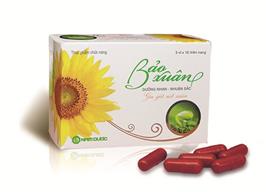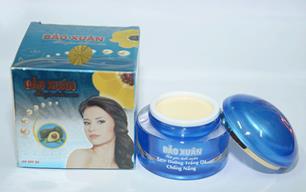Similar trademarks, but whether a likelihood of confusion may exist, it is a question
A civil case brought by Ngan Anh Enterprise at the Hau Giang Provincial Court against the Intellectual Property Office of Vietnam (“IP Vietnam”) is an interesting challenge to the government’s approach to the determination of trademark similarity.

Ich Nhan Pharma Co. Ltd (“Ich Nhan”) manufactures and sells food supplements with anti-aging properties under the mark “Bảo Xuân & device” which was registered under Reg. No. 0172843 covering medicines and nutritional foods used in healthcare in Class 5.

Ngan Anh Enterprise (“Ngan Anh”) produces and trades in skin cream products with whitening properties. Ngan Anh applied to register the mark “Bảo Xuân” under Trademark Application No. 4-2011-15391 for the goods in Class 3 primarily covering cosmetics which was then refused for registration. The “Bảo Xuân” mark for the cosmetic products in Class 03 was deemed by the IP Vietnam confusingly similar to Ich Nhan’s prior mark “Bảo Xuân & device” for the products in Class 05.
Over several years, various actions have been taken by Ich Nhan and Vietnamese enforcement authorities, including:
- Obtaining an assessment conclusion from the Vietnam Intellectual Property Research Institute (“VIPRI”) on infringement caused by Ngan Anh for using the mark “Bảo Xuân” for the goods in Class 03.
- Filing a petition to Market Management Bureau (“MMB”) of Hau Giang Province. Under a working Minutes issued by the MMB, Ngan Anh admitted infringement and undertook not to manufacture and trade in the cosmetics bearing “Bảo Xuân” mark. In an Official Letter pertaining to an administrative penalty against Ngan Anh, the MMB of Hau Giang Province stated that Ngan Anh also promised to destroy all infringing products within 40 days.
- The Hanoi MMB issued many sanction decisions against drugstores trading in the cosmetic products bearing the “Bảo Xuân” mark manufactured by Ngan Anh.
- The Inspectorate of Ministry of Science and Technology (“IMOST”) issued a sanction decision against Ngan Anh for manufacturing the infringing cosmetic products.
Upon receipt of the IP Vietnam’s refusal decision of registration for Trademark Application No. 4-2011-15391, Ngan Anh filed a lawsuit petition against the IP Vietnam with the Hau Giang Provincial Court. The IP Vietnam’s refusal of registration for the “Bảo Xuân” mark in Class 03 was predicated on Article 74.2(e) and 74.2(g), Vietnam IP Law. In detail, under the laws, a trade mark shall not be registered if it is identical with/confusingly similar to an earlier trade mark and the goods or services for which the trade mark is sought to be registered are identical with/similar to the goods or services for which the earlier trade mark is protected. In this case, the IP Vietnam took the view that the “Bảo Xuân” mark for the goods in Class 03 applied to register by Ngan Anh was in conflict with the prior-registered “Bảo Xuân, device” mark for the goods in Class 05. Ngan Anh refuted similarity contentions by the IP Vietnam and argued the goods bearing the mark in questions are totally different in terms of nature, intended use, purpose and target consumers. In review of evidence and facts provided by the two parties, the Court of Hau Giang Province ruled in favor of Ngan Anh Enterprise in 2016.
The IP Vietnam has now filed an appeal against Hau Giang Provincial Court’s verdict on the grounds, among others, that the Nice Class system could not serve as a basis to conclude likelihood or risk of confusions caused by one trademark. There are various Vietnamese enforcement authorities involved in this case, such as the VIPRI, the MMB of of Hau Giang Province, the Hanoi MMB and IMOST which did not rule in favour of Ngan An, except the first instance Court of Hau Giang Provincial Court. The trademarks in question are evidently similar, but it is uncertain whether or not such similar trademarks can cause confusion to the consumers is still questionable when the goods claimed under those marks are arguably not the same.

